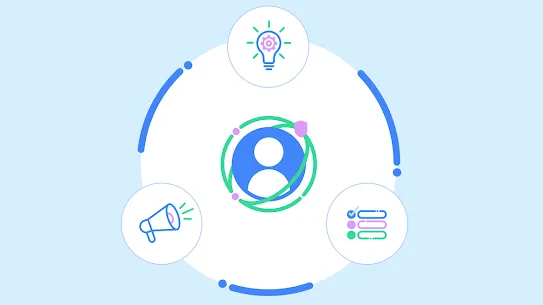
Your feedback in action: Upcoming Privacy Sandbox developments
Today’s Privacy Sandbox reflects years of feedback and engagement from developers, businesses, users, advocates, and regulators. We recently shared an updated approach to elevate user choice. As this moves forward, an open development process remains essential to building towards the next era of online privacy together.
The first half of 2024 was filled with progress and learnings, as ad tech companies engaged in testing the core Privacy Sandbox technologies: Topics, Protected Audience, and Attribution Reporting APIs. The feedback from this testing highlighted areas for potential enhancements and continued investment from Privacy Sandbox. This real-world feedback on the APIs is incredibly valuable, and as always, we're taking it into consideration.
We're excited to share several proposals to incorporate recent feedback into the Protected Audience API:
- Enhanced deal support
- New “clickiness” signals for bidding
- Extended interest group lifespan
Enhanced deal support
In today’s ad industry, many advertisers use deals, or private marketplaces, to buy premium inventory and audiences from publishers via curated access or preferred pricing. We understand that accounting for deals in the Protected Audience auction and reporting process is important, so we’re proposing an update to the fields within interest groups to accommodate deal information (deal ID and seat ID).
To maintain safeguards for user privacy, deals reporting will be subject to the same k-anonymity checks as other cross-site information that can be queried from Protected Audience today.
We are actively building this feature. To learn more, see the deals developer guide.
We’re excited to see Privacy Sandbox expanding its capabilities to support deal-based use cases. Integrating deal information into the Protected Audience API is promising, as it allows publishers and advertisers to sustain their partnerships while emphasizing user privacy. We look forward to testing these features in collaboration with publishers and Chrome to see how they work and evaluate if they cover the necessary use cases.
SVP of Product
Index Exchange
New “clickiness” signals for bidding
“Clickiness” is a person’s likelihood to interact with the ads they see, and it’s an important feature in bidding models today. By supporting clickiness signals in Protected Audience API, performance-focused advertisers and their vendors can better optimize return on ad spend, without having to know an individual user’s web browsing and ad view history.
The proposed update allows companies to register views and clicks with the browser. At Protected Audience bidding time, the browser counts the registered views and clicks on that device for pre-defined time intervals so that bidding logic can take those signals into account.
In the interest of user privacy, the signals will only be accessible in JavaScript functions executing in isolation, and reporting data will be limited to noised, summed counts, instead of event-level information.
The explainer can be found here.
RTB House’s focus is getting great results for advertisers and publishers, and bidding signals play a big role in that. Adding clickiness signals to the Protected Audience API will help improve bidding effectiveness and ROI while respecting user privacy. We look forward to testing the new capabilities, and we'll continue working closely with the Privacy Sandbox team to build a more open, unified, and efficient ecosystem.
Chief Commercial Officer
RTB House
Extended interest group lifespan
Right now, a Protected Audience interest group has a lifespan of 30 days. That means a person’s activity on a website can only impact the Protected Audience ads they see for up to 30 days after their last site visit.
We’ve heard from ad tech companies that the 30 day lifespan limits their ability to support a wide range of advertisers with products that have longer purchase lifecycles, such as travel or automotive. To better support these segments, we are proposing an extension of the maximum possible lifespan to 90 days. Companies testing Protected Audience API have shared that this change will bring significant performance gains for advertisers with longer customer journeys.
The explainer can be found here.
We're excited that interest group duration is being increased to 90 days. This will support advertisers with longer sales cycles and has the potential to improve performance metrics more broadly across the ecosystem. By discussing use cases and sharing insights, the industry continues to evolve and improve Privacy Sandbox as a whole.
VP Data Science and Engineering
NextRoll
Balancing continuous enhancements with growing momentum
Software, much like the web itself, is always evolving. Privacy Sandbox is deeply invested in understanding and balancing input from a broad range of stakeholders. At the same time, we're also continuously shipping enhancements based directly on your feedback. We’re excited to share the latest progress and explainers for deal support, clickiness signals, and extended interest group lifespan.
While there are exciting features to come in the future, waiting for these shouldn't slow down your current efforts. Your active participation is vital in shaping the development of these technologies and ensuring they meet the evolving needs of the industry.
We're committed to collaborating with the ecosystem to continually enhance Privacy Sandbox and build towards the next era of online privacy. Your insights and real-world feedback will help get us there, together.
Read more
- Read more on the Google for Developers Blog
- Find documentation about the Protected Audience API on Google for Developers
- Read more about the proposals and APIs for the Web
- Watch a video about the Protected Audience API and learn more on the Learning Hub
Explore more articles about: Privacy Sandbox for the Web, Announcements

